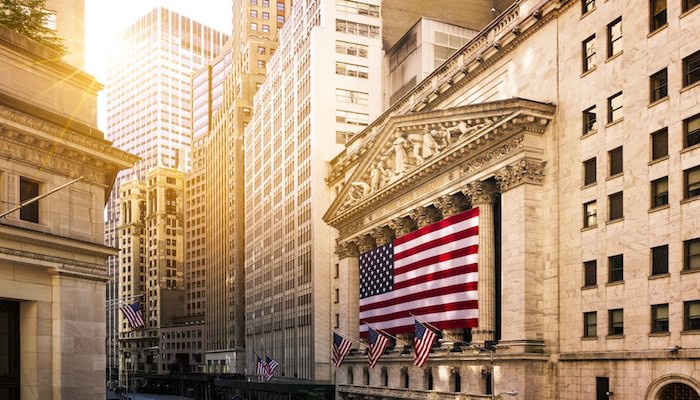Discover Securities on the SGX: ADRs

There’s far more to life than stocks at the stock market. The Singapore Exchange offers several choices for investing. A quick trip to the SGX website will show the various indices, fixed income options and derivatives in addition to the many securities investors can choose from. On top of stocks, these securities include:
- ADRs
- Company and Structured Warrants
- Real Estate Investment Trusts or REITs
- Share Buyback
- Certificates
- Exchange Traded Funds or ETFs and Exchange Traded Notes or ETNs
Spiking takes a bird’s eye view of each of these securities in turn, starting off with ADRs: what they are, how they’re traded on the SGX, and why they can make good investments.
What are ADRs?
“ADR” stands for American Depository Receipts, a term that has been used interchangeably with GDR or Global Depository Receipts. An ADR is a bank certificate that represents the shares of an overseas company that is listed in the US. In the SGX, for example, there several ADRs being offered for US-listed Asian companies.
Moneytalk traces back to when ADRs first came to be. In 1927, ADRs made their debut in US markets as a way to make it easier for investors to buy shares of a company listed on a foreign exchange.
Before ADRs, investors who wanted to buy overseas shares (which we’ve discussed in a previous post) had to open a brokerage account with access to the right country’s stock exchange. This method was fraught with complications such as the difference in currencies and high brokerages fees. Investing in ADRs had none of these difficulties.
To create an ADR, a bank buys shares in bulk of an overseas stock through its fellow bank in the country that the company is listed in. This bulk purchase is then divided up into smaller parcels which are sold on US markets.
How are ADRs traded on the SGX?
The SGX is Asia’s first exchange to open trading for ADRs and other international securities via GlobalQuote, which is offered in partnership with the NASDAQ. You can buy and sell ADRs on GlobalQuote in much the same way you would buy and sell shares on the Mainboard. You can also buy and sell shares on US markets during US trading hours.
SIAS notes how you can also buy and sell on overseas bourses via the issuance and cancellation of ADRs. When you buy shares, they go into your foreign custody account, and the common shares end up with the ADR Depositary Bank or the DR Bank. It this bank which will give you your new ADR.
If you sell this ADR, it goes back to the DR Bank, which cancels the ADR and gives you the common shares which you can then sell at an overseas exchange.
Quoting Investopedia, Moneytalk adds that on the SGX, there are two main types of ADRs:
- ADRs that are listed on an exchange or quoted on NASDAQ. These ADRs come with more SEC requirements, but their trading volume enjoys higher visibility.
- ADRs that are floated on a US exchange. These ADRs can raise capital and are highly visible in US financial markets.
ADRs may also be classified as single-listed and dual-listed: Single-listed ADRs are from companies that only have ADRs and are not listed on any stock exchange. Dual-listers have both ADRs and an exchange-listing in the US and a foreign bourse.
Why do ADRs make good investments?
Trading in ADRs, particularly on the SGX, does come with several benefits. Here are some reasons why ADRs might make a great addition to your portfolio, as compiled from SIAS, DBS Vickers Securities, KGI China Development Financial, OCBC Securities and the SGX.
- You get 24-hour a day trading access to foreign markets, even as you manage your trading activities in these overseas stocks within your own, Asian timezone.
- You can trade ahead of the opening of the US markets, and according to Asian news.
- You can exchange ADRs on GlobalQuote and on US stock markets, as well as exchange ADRs with any common shares in other countries’ stock markets.
- You get full clearing services for block trades.
- You’re guaranteed stock and cash settlements by the Central Depository or CDP.
- You’ll enjoy lower costs, no stamp duty or sales tax, and no conversion fees for transferring ADRs between the SGX and the US. There’s also a lower custody cost versus other Asian exchanges.
- You won’t have to open a separate overseas trading account, pay in a foreign currency, pay any overseas custody fees, or deal with foreign trading or tax protocols.
Why you should be careful investing in ADRs
As with any investment, on the stock market or otherwise, ADRs come with their fair share of risk. Here are some things to keep an eye out for or at least bear in mind when investing in ADRs, as compiled from Moneytalk, Shares Investment (Singapore), KGI China Development Financial, OCBC Securities and the SGX.
- Single-listed ADRs might be difficult to sell for cash, because they are not listed on any stock exchange. If investors surrender their single-listers, they might be stuck with a bunch of unlisted shares.
- The shares that are bundled up in an ADR are actually held by the bank or a custodian, which means the investor that holds the ADR has no hold on the shares. If the bank or custodian gets into financial trouble, the investor might not be able to get the ADR shares back.
- If trading grinds to a halt in the US or on the SGX, ADR investors might suffer losses because of market changes brought about by the stoppage or delay. Losses may also arise if the ADR is delisted from GlobalQuote.
- ADRs on GlobalQuote are not covered by the listing requirements of the Singapore Exchange Securities Trading Limited or SGX-ST. This means that ADR-holders don’t have voting rights like shareholders do. They also don’t get non-cash entitlement like rights issue or bonus shares. And any dividends that ADR-holders receive, first have transaction charges and taxes deducted from them.
- The CDP charges a flat fee of SGD10.70 for each transfer between the SGX and the US, while the ADR depository or DTCC also charges SGD0.25 per ADR issued.
- Miscommunication between the broker and the issuing party might result in a less than ideal price.
- There are also political and currency risks that come with the country where the company whose shares you’re buying is based.
- ADR-holders might not be able to take legal action, if necessary, in the US against the DR Bank or the company whose shares are involved.
DBS Vickers Securities points out that in order to manage these risks, investors should keep up to date with financial news as well as understand, thoroughly, the workings of ADRs and the markets where they are traded.
Keep track of the action on the SGX with Spiking
Keeping investors up to date and in the know is what Spiking is all about. Plugged in directly at the SGX to provide real-time, verified information, Spiking keeps users abreast of the trading activities of more than 8,000 sophisticated investors, as well as the performance of every stock spiking on the SGX’s indices.
Discover how Spiking can help you make smarter investment decisions — visit the Spiking app homepage today.

